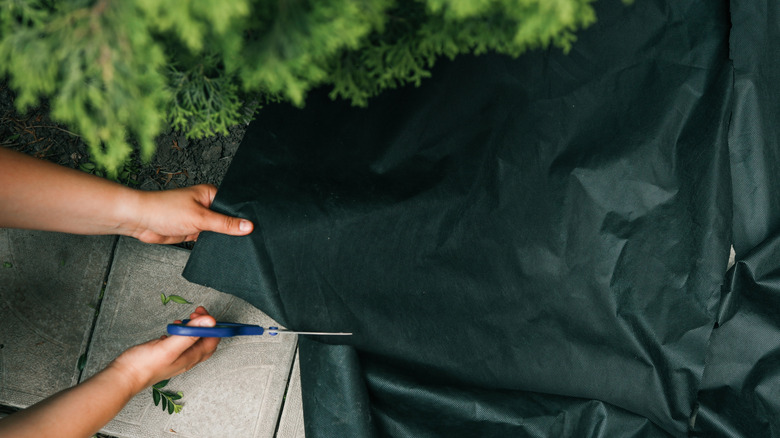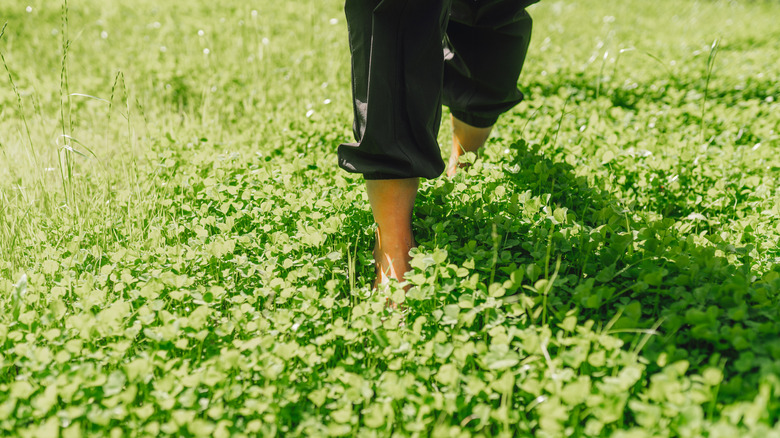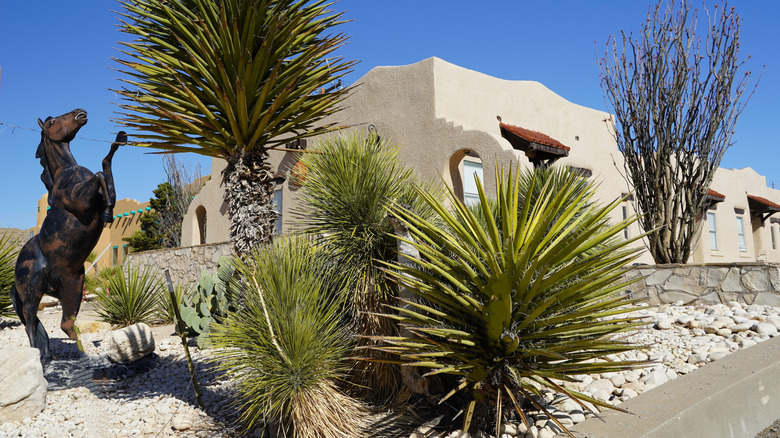Landscape Fabric Is Out: Here's The Natural Lawn Solution More Homeowners Are Choosing
When it comes to lawns, landscape fabric is old news — at least for the eco-conscious. Fighting weeds in your yard seems like an impossible task, and while you may be tempted to smother them beneath landscaping fabric, be careful. Landscape fabric has a shotgun effect, often harming more than just the weeds. If you're looking to make your home more eco-friendly, pass on landscape fabric in favor of a natural lawn.
Though landscaping fabric is recommended by landscaping companies, it's not the best choice if you care about the health and longevity of your yard — and the environment. Landscape fabric is a geotextile woven from polyester, polypropylene, or recycled plastic, and while it will kill some of the weeds that plague you, it will also block sunlight and prevent natural processes like soil aeration, water infiltration, and soil enrichment. Alongside the weeds, landscape fabric smothers soil microorganisms, keeping them from recycling the earth, and as the fabric degrades, its plastic particles will end up in the soil and water. Natural lawns, on the other hand, are both friendly to the environment and low maintenance.
Upgrading to a natural lawn
When you visit the gardening section of your local hardware store, you'll find different grades of landscape fabric boasting varying levels of porosity, all of which claim to prevent weeds. They might do just that, but not for very long. Landscape fabric tears and degrades over time, and you may even have to cut into the fabric to garden, leaving it useless but still present. An easy way to negate the negative effects of landscaping fabric is to not use it at all. Instead, reexamine how you think of your yard and its weeds. Rather than trying to fight nature, you can lean into it, lessening the amount of time and stress you devote to your yard.
Embrace a natural lawn filled with native plants and grass-alternative ground cover plants like clover and mazus, and you won't have a need for landscape fabric or your lawn mower. Before implementing these grass alternatives, you should remove the grass to keep it from growing back and choking out your new, mow-less lawn. You have a few options for removal, including cardboard sheet mulching and a good ole' shovel. In addition to ground cover plants, you can add native plants to increase the biodiversity of your yard. These plants, which will differ based on your location, maintain their own ecosystem. Some plants even help prevent pesky weeds in your garden. Not all weeds should be unwelcome, though, as herbs like thyme can be considered weeds. Perhaps weeds aren't so bad after all.
Natural options for drier areas
For those who live in drier parts of the United States, xeriscaping is a great natural lawn option. Like other natural lawn practices, xeriscaping relies on native plants, but with the intention of eliminating irrigation. In states like Arizona, Colorado, and California, this involves incorporating drought-tolerant vegetation with sand, rocks, and mulch that would occur naturally in the area. Though grass might be naturally occurring in other areas of the country, in acrid regions, the environment cannot support the hydration needs of turf grass, leading to either a dry lawn or water waste.
As with other natural lawn practices, xeriscaping focuses on tailoring your lawn to the environment, not the other way around, making it easier to care for and more eco-friendly. While cacti are often recommended as xeriscaping plants, you should focus most on plants native to your area rather than trying to fulfill a particular aesthetic. If you live in a dry region, a desert garden might be the right choice for you.


